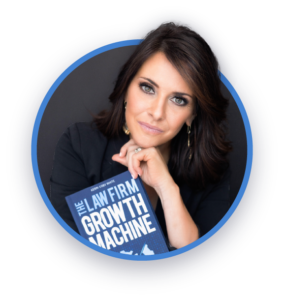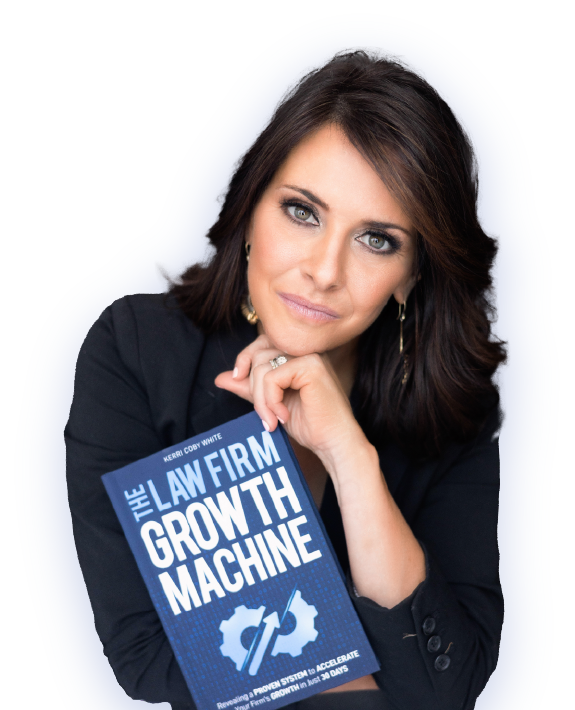In the world of client intake, your ability to listen actively isn’t just a “nice-to-have”; it’s the linchpin of your entire process. That’s why training for legal intake specialists must start with mastering the art of listening. Think about it: the intake call is often the first real interaction a prospective client has with your firm. It’s your first impression, your chance to connect, to earn trust, and to gather the information that determines everything that comes next.
And yet, so often, listening gets treated like background noise. We hear words, we follow the script, we check the boxes. But are we understanding? Are we catching the client’s tone? Their hesitation? Their urgency?
Active listening is about being fully present. It means giving the client your undivided attention, not just to their words, but to their emotions, their pace, their silences. It’s about listening, not to reply, but to understand. That distinction? That’s where intake becomes transformational.
For intake specialists, this skill isn’t optional; it’s essential. You’re not just taking down facts; you’re making people feel safe, heard, and cared for at one of the most vulnerable moments in their lives. They may be injured, scared, overwhelmed, or angry. If they sense even a whiff of disinterest or distraction, they’ll move on. And you’ll never get the chance to earn their business or their trust.
I’ve seen it firsthand: the best intake professionals aren’t the ones with the flashiest scripts. They’re the ones who can truly listen. Who can pause long enough to hear what isn’t being said? Who knows that sometimes, just saying, “That sounds difficult. I’m so sorry you’re going through this,” means more than a perfectly delivered pitch.
When you listen like a pro, you’re doing more than gathering information. You’re laying the foundation for a powerful client relationship built on empathy, clarity, and genuine connection. That’s the heart of practical training for legal intake specialists, helping you turn listening into your strongest business development tool.
Understanding Active Listening
Active listening is more than a communication skill; it’s a mindset. It means fully engaging with the person in front of you (or on the other end of the phone), tuning out distractions, and making a conscious choice to focus not just on the words being said, but on the meaning behind them. For intake specialists, this isn’t just about professionalism; it’s about compassion. Clients are often anxious, hurt, or confused. When you listen actively, you’re not just gathering information; you’re offering reassurance that someone is finally paying attention to their story.
Genuine active listening involves four key components: concentrating, understanding, responding, and remembering. It starts with silence, giving space for the client to speak without interruption. Then comes understanding, which is where empathy comes in. Are you catching the hesitation in their voice? The fear in their phrasing? Next, we respond, not with a canned answer, but with thoughtful acknowledgment. “I hear you.” “That must have been scary.” And finally, we remember. Not just the facts for the intake form, but the context, the emotion, the client’s why. That’s the difference between transactional and transformational intake.
According to Simply Psychology, active listening plays a pivotal role in building trust and fostering positive change in client-helper relationships. And I’ve seen that play out again and again. When you focus on both the content and the underlying feelings, clients sense it. They relax, open up. They start to believe, “Okay, maybe this firm can help me.” That belief? That’s the first step in conversion and, more importantly, it’s the first step in truly serving your clients with excellence.
The Importance of Active Listening in Client Intake
Let’s be real, intake isn’t just about answering phones and collecting case details. It’s about beginning a relationship. And like any relationship, it’s built on trust. When a prospective client reaches out, they’re often unsure, overwhelmed, or in pain. If the person answering the call listens with care and intention, that client immediately feels safer. They don’t need perfection; they need presence. They need someone who hears them. Genuine listening is the first, most powerful way to say, “You’re in the right place.”
But trust isn’t the only benefit you gain from active listening. You also gather better, more complete information. When intake specialists are fully engaged, listening with empathy and curiosity, they ask better follow-up questions, catch the little details that might otherwise slip by, and paint a clearer picture of the client’s situation. This isn’t about filling in blanks on a form. It’s about understanding the whole context, which not only leads to better case qualification but also sets your legal team up for success down the line.
Related Resource: Want to see how structured training can multiply the impact of your listening skills? Read our guide: Why Legal Intake Training Is Essential for Client Conversion and Growth.
Capturing What Clients Truly Need
And here’s something I’ve learned time and time again: clients don’t always know how to articulate what they need. They might talk about pain when they’re afraid of losing work. Or vent about an insurance adjuster when the genuine concern is how they’ll feed their kids next week. Active listening helps you catch what’s not being said, the subtext, the fear, the frustration. When you pick up on those cues and address them, you’re not just taking an intake; you’re delivering value. And clients remember that. It increases satisfaction, builds loyalty, and yes, dramatically improves your conversion rate.
As we often say at KerriJames.co, active listening transforms intake from a transaction into a connection. It’s how you move from “just another firm” to their firm. Intake calls stop being routine and start becoming profoundly human-centered experiences. And when you operate from that place, when your team listens like pros, you don’t just win more cases. You build a reputation rooted in empathy, effectiveness, and excellence.
Techniques for Effective Active Listening
So, how exactly do you “listen like a pro”? It’s one thing to say you’re paying attention; it’s another to show it with intention, presence, and technique. Active listening is a skill, which means it can be learned, practiced, and strengthened over time. And like any sound system in your firm, it needs to be consistent.
Here are five tried-and-true techniques every intake specialist should be using on every single call:
1. Eliminate Distractions
This one might sound obvious, but it’s often the first thing that slips. You can’t truly listen if you’re glancing at emails, checking Slack, or mentally running through your to-do list. Clients can feel when your mind is elsewhere, your voice changes, your pauses stretch a little too long, and your responses come just a beat late.
Create an environment that supports focus. That means putting your phone on silent, minimizing browser tabs, and treating every intake call like it’s the most important conversation of your day because for that client, it is. The physical environment matters too. Is your space noisy? Cluttered? Distracting? Tighten it up. You can’t be present in chaos.
2. Use Open-Ended Questions
Closed questions shut down conversations. Open-ended ones open the door to deeper understanding. Instead of asking, “Did the accident happen at work?” try, “Can you walk me through what happened that day?” This slight shift invites the client to share their story in their own words, giving you valuable context and showing them that their experience matters.
Pro tip: Pair open-ended questions with encouraging language. Try, “Take your time, I want to make sure I understand everything,” or “You don’t have to rush, I’m here to listen.” When clients feel like they’re not being rushed or judged, they’ll tell you what you need to hear.
3. Reflect and Paraphrase
One of the best ways to demonstrate that you’re listening is to reflect what you’ve heard. Say things like, “So what I’m hearing is that you were on your way to work when the accident happened, and you’re still in a lot of pain, is that right?” This not only confirms that you understood correctly, but it also gives the client a chance to clarify or elaborate.
Reflective listening shows clients that they matter. It turns the conversation into a shared understanding, rather than just a data grab. It also helps reduce misunderstandings, especially when clients are emotional or trying to explain something complex.
4. Observe Non-Verbal Cues
Now, this one is trickier over the phone, but no less critical. Non-verbal cues include tone, pacing, pauses, and even background noise. If a client suddenly gets quiet or their voice trembles, that’s a signal. If they rush through their story or seem defensive, you need to adjust your approach, slow down, reassure them, and offer a little more empathy.
When possible, use video tools or chat platforms that give you access to facial expressions and body language. But even on a standard phone call, you can tune in to emotional cues if you’re listening. Remember: what the client says is only part of the story. How they say it tells you the rest.
5. Provide Feedback
Active listening isn’t silent listening. It includes small, thoughtful responses that tell the client, “I’m right here with you.” These can be as simple as “I understand,” “That sounds frustrating,” or “Thanks for explaining that so clearly.” These micro-validations build rapport and encourage the client to keep sharing.
Chris Mullins, a legend in the intake world, always emphasizes this: be present. When a client feels like they have your full attention, they start to relax. And when they relax, they begin to trust. That’s when real connection and real conversion happen.
Overcoming Common Challenges
We’ve talked about how powerful active listening is, but let’s not sugarcoat it: it’s not always easy. Intake specialists operate in fast-paced, high-stakes environments. You’re dealing with emotional clients, time constraints, technology glitches, and sometimes even internal pressure to move things along quicker than you’d like. So, how do you stay grounded and intentional when everything around you feels rushed or reactive?
Here are three real-world challenges intake specialists face and the practical strategies to overcome them:
1. Stay Patient: Resist the Urge to Rush
Some clients are talkers. Others are anxious, distracted, or hard to follow. And when you’ve got a long queue of calls waiting or three chats blinking on your screen, it’s tempting to nudge them along or finish their sentences. But the moment a client feels rushed, they shut down or worse, they leave.
Patience is your power tool. Let the client talk. If they go off-topic, gently guide them back. If they get emotional, create space for them to feel heard. Say, “Take your time, I’m here for you,” or “No rush, I want to make sure I have everything right.” These little moments of reassurance can go a long way in calming a stressed-out caller and deepening their trust in you.
2. Avoid Assumptions: Let the Story Unfold
You’ve probably heard it all before. After a while, intake stories start to sound the same: rear-end collisions, slip and falls, insurance headaches. It’s easy to assume you know where the story is going. But assumptions are the enemy of empathy. And they can lead to costly intake errors.
Instead, listen like every story is brand new. Because for that client it is. Even if it sounds familiar to you, the emotional context is unique. Maybe this car accident triggered past trauma. Perhaps it’s not about the injury, but instead losing their job or caring for their kids. Don’t jump to conclusions. Let the client lead, and you follow with curiosity, not judgment.
3. Manage Time Wisely: Listen Thoroughly, Respond Efficiently
One of the biggest challenges in intake is balancing empathy with efficiency. You can’t spend 45 minutes on every call, but you also can’t afford to make people feel rushed or dismissed. So what’s the solution?
Start by training your team to recognize emotional “hot spots” in a call. That’s where you slow down, lean in, and listen deeply. In less sensitive sections, such as gathering dates or insurance details, you can move more quickly. Use transitional phrases like, “Thanks for sharing that, now I’ll get a few details so we can move forward,” to keep the client informed and the call on track.
And remember: efficiency isn’t just speed, it’s clarity. When you listen well the first time, you avoid repeat calls, corrections, and confusion. As Pearl Talent points out, effective active listening not only improves first-call resolution but also boosts client trust and referrals. It’s a win-win: you serve better, and your metrics improve.
Training and Continuous Improvement
Here’s the thing about active listening: it’s not a “one-and-done” skill. Just like intake scripts evolve, technology changes, and client expectations shift, so should your team’s communication strategies. Active listening isn’t about being naturally good at it. It’s about committing to practice, feedback, and growth over time.
1. Role-Playing Exercises: Practice with Purpose
Role-playing isn’t just for rookies; it’s one of the most powerful tools your team can use to sharpen their active listening muscles. Create real-world intake scenarios that mimic the kinds of clients your team handles every day: the overwhelmed parent, the angry accident victim, the skeptical caller. Then flip the script and let team members play both the client and the rep.
What happens next is magic. Intake specialists start to feel what it’s like to be genuinely heard or dismissed. They learn where they’re strong and where they slip into habits like interrupting or rushing. Practice like this builds muscle memory, so when the real call comes in, they’re not winging it, they’re walking in prepared.
2. Feedback Mechanisms: Make Growth a Team Sport
We all have blind spots. That’s why consistent, structured feedback is essential. Start with peer-to-peer reviews. Let intake specialists listen to each other’s calls (with permission, of course) and offer feedback using a simple, supportive rubric. Look for things like tone, pacing, question clarity, and whether the client felt truly heard.
Layer in self-assessments, too. Give team members a chance to listen to their recordings. Ask: “Where did I show the client I was listening? Where could I have slowed down or asked a better question?” When feedback becomes part of your team culture, growth follows naturally and quickly.
3. Continuous Learning: Keep the Momentum Going
Active listening, like any high-level skill, thrives when you stay curious. Invest in ongoing education, whether that’s through webinars, workshops, coaching, or bite-sized video trainings during team meetings. Don’t underestimate the value of revisiting the basics either. Sometimes, revisiting a foundational concept, such as the difference between reflective and reactive listening, can reignite awareness and sharpen performance.
And remember, great teams learn together. Create space for your intake staff to share insights, “wins,” and even challenges with each other. One intake rep’s breakthrough could be another’s lightbulb moment.
At KerriJames.co, we’ve seen firsthand how advanced active listening techniques can transform client experiences and intake team confidence. When your team knows how to listen deeply and communicate intentionally, they don’t just improve performance. They become your firm’s greatest asset in client trust and retention.
Final Thought
Active listening is a powerful tool for intake specialists, enabling them to connect deeply with clients, gather essential information, and build lasting relationships. That’s why practical training for legal intake specialists must center on mastering active listening techniques that transform interactions and elevate client satisfaction.
Remember, every client interaction is an opportunity to listen, understand, and make a positive impact, and the proper training ensures intake professionals are ready to do just that.
Ready to take your intake team’s listening skills to the next level? Contact Kerri James today to start building a team that turns every client call into a lasting connection.










